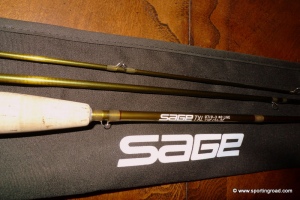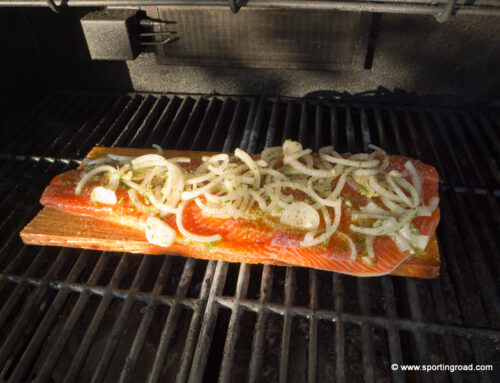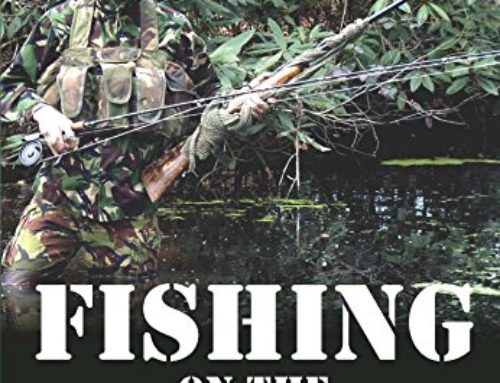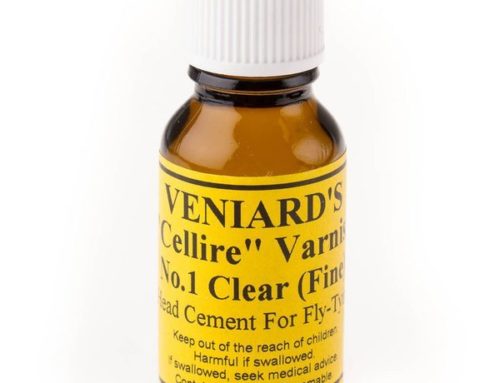Please sign up here for notices about the new site I am launching on Rim Chung’s One Fly methods. I have been asked  “What rod is Mr. Chung’s current favorite?,” on this blog. This will be the subject of a soon-to-be released article and a chapter in the book that I am in the works of publishing about his fishing methods.
“What rod is Mr. Chung’s current favorite?,” on this blog. This will be the subject of a soon-to-be released article and a chapter in the book that I am in the works of publishing about his fishing methods.
The short answers are that a Sage TZX 0710- #0 Line and the Sage LL 2-weight in 7’9”, are Rim Chung’s current all-time favorites.
He also fancies several of his Winston rods and depending on when you ask him he often responds that the Winston Boron IIX 8’6″, 3 weight is his all time favorite rod.
My all time favorite is a Winston WT 8′, 3-piece, 3-weight rod, and I exclusively fish Rim Chung’s methods of nymph fishing. Another student of his prefers the Winston Boron III LS ; 3 WT 8’6″, so it may be whatever you get used to becomes your favorite.
Asking Rim which is his favorite rod used to be an easy question for him to answer, but now the usual response is something along the lines of “Well, that is a lot like asking a man about his favorite woman when he has the pleasure of so many to choose from in his lifetime. It becomes hard to compare one to the other. One might be in love with each one for what it represents and offers, without comparison to the others.”
I’ll attempt to let you in on an advance glimpse behind the invisible veil to catching more fish with his ultra-light weight fly fishing methods here.
Mr. Chung has been fly fishing since the glass and bamboo rod era, when they were the only choices as anglers. Many times he has emphasized to me the importance he places on light weight equipment. And, he is not the only one to focus on this important aspect of nymph fishing.
Oliver Kite put it well that “
“So how does bamboo compare to the modern graphite rods?,” I asked Mr. Chung. With bamboo rods having been around since at least the 1860s, but long having been abandoned to synthetics such as fiberglass, and now graphite, it seemed to me that graphite rods were logically superior. Mr. Chung replied, “I had acquired a few glass rods and eleven bamboo rods for my personal use, and for nearly two decades I fished bamboo exclusively. Since those days, I have tried many dozen graphite rods of various makes, weights and lengths. I say this not to impress you, only to impress upon you the thought that I have given this subject over the years of my experimentation with rods.”
“But with the lighter weights of graphite compared to bamboo, why do you use such light weight graphite rods today?” I asked. He said, “It seems very logical to me to use a light weight rod, especially when you are using small flies and light tippets. As you know, I tie and use flies which are size 16 to 26. Size 18 to 24s naturals are usually common in most rivers I have fished from the East Coast, to Montana, Utah, Colorado, and even in Alaska, Canada, and Korea. This is especially true in tail-water fisheries which predominate in the Denver area, where I live and have fished most. These small flies dictate that you use 6X or 7X tippet. Upon the initial setting of the hook, I believe that your rod needs to cushion these delicate tippets. This means a delicate and sensitive rod has a strong advantage over a more powerful one.”
“But what about the traditional thought that you need a rod with enough ‘backbone’ to play the fish?” “A light weight rod  is also more sensitive in your hand. That sensitivity makes the whole experience of playing a trout more enjoyable. With the lighter line it is easier to control the line and the fish itself. This is especially true when it is big fish which are running up or down stream. It is easier to pick up sixty feet of line, when the line itself weighs half as much, due to its smaller diameter. The weight of sixty feet of five weight line could be too much to quickly lift in stronger currents. Even if you were able to do so over conflicting currents, the force required will be enough to break off most fish caught on 6X tippet. Remember, the line is like a chain, If forced, it will break at its weakest link. This is the tippet or the fly. The rod and the fly line are generally incapable of being broken on trout — even a two weight rod and a zero weight line on a thirty inch brown.”
is also more sensitive in your hand. That sensitivity makes the whole experience of playing a trout more enjoyable. With the lighter line it is easier to control the line and the fish itself. This is especially true when it is big fish which are running up or down stream. It is easier to pick up sixty feet of line, when the line itself weighs half as much, due to its smaller diameter. The weight of sixty feet of five weight line could be too much to quickly lift in stronger currents. Even if you were able to do so over conflicting currents, the force required will be enough to break off most fish caught on 6X tippet. Remember, the line is like a chain, If forced, it will break at its weakest link. This is the tippet or the fly. The rod and the fly line are generally incapable of being broken on trout — even a two weight rod and a zero weight line on a thirty inch brown.”
I reflected that Mr. Chung was not the first to advocate light rods, as I was to able to confirm later in my research, but for some reason light rods have never completely become in favor. I continued the discussion with Mr. Chung by asking, “With a two weight rod don’t you find it hard to cast far enough?” “As the small flies dictate that you use fine tippets, I do not see any good reason when fishing for trout to use a rod heavier than a three weight. The primary argument that I have heard in favor of heavier rods, such as the ever-popular five weight, is the ability to cast in windy situations. Let’s be honest. There has been a recent trend in America, and for that matter throughout Europe, to cast further and further. Most casts for trout are under forty feet.
Rarely is there a need to cast sixty feet of line, particularly in nymphing. Even if you can easily cast sixty feet, you will not be able to control the line properly in rocky streams such as ours in Colorado. Further, your reaction time might be impaired such that you will encounter difficulties in hooking the fish. A two weight rod will cast adequately even in high winds, at those practical distances. If the wind is preventing a cast at those distances, most likely the angler will be thinking about heading home anyway, because it could be too windy to be comfortable enough to enjoy fishing.” “What’s wrong with my five-weight rod for nymph fishing? The salesman at the fly shop said it was a good general purpose rod. He said it was the best all around rod.”
“The only reason that I can think of for using a five-weight rod for trout is for heavier dry flies or streamers. When you  have a large wind-resistant fly you need heavier leaders, tippet and line to properly turn over the fly. It is the same argument for using nine-weight rods for the extremely heavy bonefish flies. Therefore, it probably is a good all around choice if you are going to fish all different methods. But for nymphing, it is tantamount to using a driver on the putting green. Apply the same logic that you need a five weight to turn over 2x tippet and a weighted woolly bugger, only makes sense when you are using size 16 to 26 flies and 5X to 7X tippets. The lighter line will also create less drag on the fly itself. Therefore, less weight is necessary to keep the fly at a natural drift. The logic of ever using a five weight for nymphing, fails to register with me. Critically analyze this for yourself and see if you agree.”
have a large wind-resistant fly you need heavier leaders, tippet and line to properly turn over the fly. It is the same argument for using nine-weight rods for the extremely heavy bonefish flies. Therefore, it probably is a good all around choice if you are going to fish all different methods. But for nymphing, it is tantamount to using a driver on the putting green. Apply the same logic that you need a five weight to turn over 2x tippet and a weighted woolly bugger, only makes sense when you are using size 16 to 26 flies and 5X to 7X tippets. The lighter line will also create less drag on the fly itself. Therefore, less weight is necessary to keep the fly at a natural drift. The logic of ever using a five weight for nymphing, fails to register with me. Critically analyze this for yourself and see if you agree.”
I asked, “So if you are going to master nymph fishing, the lighter line rod is essential?”
“As you know by now, I have never been one to place an emphasis on the equipment itself. The technique is of paramount concern. But, the lighter rod and line is akin to having a fine sports car. If you learn how to drive it well, it may be safe to drive it at high speeds where permitted, in tight corners and for all driving situations. Yet, the reverse may be true for the four wheel drive pick-up with its ability to go anywhere. If I only drove paved roads and mostly freeways in Los Angeles, I would never see the need for a four wheel drive vehicle. To me, purchasing a five weight rod for nymph fishing for trout would be akin to buying a four wheel drive pick-up truck in Los Angeles. You just cannot rationalize it as being the best choice for the situation at hand.” “Well, if I were to get the perfect rod for nymphing, what should I buy?” I asked. “I believe you should choose the best rod you can afford. You generally get what you pay for when it comes to a fine piece of equipment.”
“That’s what my father-in-law always says about guns, horses and women,” I replied and we shared a laugh.
“This is an area where you should not skimp,” Mr. Chung frankly stated. “I also own a few bamboo rods which are very beautiful, but not practical compared to today’s graphite. Therefore, I generally dismiss them for the practical angler with today’s choices in rods. As for my favorites, I have settled on a very light, seven foot nine inch, two-weight rod and a zero-weight seven-foot ten-inch three-piece rod. There are many fine manufacturers of graphite rods these days. Many manufacturers produce light rods which may be a good choice for the purpose of nymph fishing. Generally, I prefer two and three weight rods with a finer action. A nine foot long rod would be easier to cast and manage than a shorter rod. Perhaps a nine foot rod would be best for nymphing, as it allows you to reach further over conflicting currents. However, I began my serious fishing with a six foot rod, so a seven foot nine or ten inch rod is still manageable for me and I somewhat prefer the lighter weight of the shorter rods. Given that the weight of a nine foot rod would necessarily be heavier to maintain the same action, the longer reach may be a negligible advantage. The choice of a rod could be a purely personal decision. Cast several rods, or better yet fish them for a day, and choose for yourself.”
I asked, “Well, about those new four-piece or five-piece two weight rods then?” “As for the number of sections in a rod, I believe that less is generally more. Meaning, that one should ask whether the additional ferrules were added to increase the performance of the rod. I think all would agree that they were not placed there for performance, but for the ability to make the rod fit in a smaller case. This lends me to believe that less ferrules adds up to better performance and fewer dead spots which result in the dampening of the rod’s action. However, the new Winston five piece rods seem to have a very good action, so maybe that is changing as well. If it were my only rod, I would definitely seek a two piece rod.”
“But having a good light rod alone will not make you a better fisherman. I once went up to the Cheeseman Canyon section of the South Platte to fish with a friend. Upon arriving I discovered that I had my reel in my jacket, but I had left my rod at home. Rather than try to persuade my friend to drive me all the way back, I suggested that he fish and that I would just watch and enjoy the day. With my reel in my pocket and his rod in his hand, we made the twenty-minute hike into canyon. While walking down the path along the river, I stepped on a pine cone. I picked it up and felt its weight. I was thinking that if I had enough weight to the line, I might be able to cast it by hand. I thought perhaps a pine cone would provide enough weight. My friend looked strangely at me, as I stuck the pine cone in my pocket. He didn’t ask why, perhaps wondering what the china man was going to eat that pine cone with for lunch. As he began fishing downstream, I sat on a rock and spotted a few fish. I hooked the pine cone to the leader, in the same way a bobber or strike indicator is now attached. I tied on an RS2 to the end of the line. I swung the line with the skill of a cowboy twirling a lasso, and chucked it about twenty-five feet out from the rock. I could see a fish move and I pulled on the line. To my amazement, a nice sixteen inch fish was pulling at the other end. As my friend approached to see what the hell was going on, I managed to land the fish, using only the reel, in about five minutes. I grasped the fish by the tail and raised it to the laughter of my friend.”
More on lines, flies and methods to come soon… please feel free to sign up now for the email feed on the bar to the right for more information on the articles, the dedicated website and book to follow.





